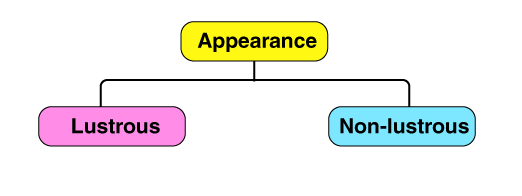VI C SCIENCE 4.GROUPING MATERIALS (TOPIC THOUGHT AND HOME WORK)
TOPIC :
WHAT IS GROUPING OF MATERIALS ?
Grouping materials in groups makes it convenient for study. Objects are grouped on the basis of their shapes, the materials they are made up of, and the properties of these materials. Materials can be grouped on the basis of similarities or differences in their properties
Materials occupy space. Materials have mass. Materials can be classified on the basis of many criteria. Materials can be classified on the basis of physical state; as solid, liquid and gas.
LINK1 :https://youtu.be/og9Gyhzm_XA
LINK 2:https://youtu.be/F3p_090Y_PQ
HOME WORK
READ THE TEXTBOOK LINE BY LINE .
16/08/2021
MONDAY
GRADE :VI-C
TOPIC :CLASSIFICATION BASED ON SEVERAL PROPERTIES.
Classification
Materials can be classified based on several properties:
- Transparency
- Hardness
- Soluble and Insoluble
- Float and Sink
Need for classification
Classification makes everything easier and orderly for better understanding.
How are materials classified?
Materials are classified based on similarities in their properties such as appearance, hardness, transparency, solubility or density.
Appearance
Polishing
- Metal polishing acts as a protective shield to metal surfaces because it stops oxidation.
- It is a method of improving the durability and texture of metal surfaces as they are much less likely to wear or corrode.
Classification based on appearance

- Materials can be differentiated from each other based on their looks.
- Some like diamond and gold are shiny and is termed as lustrous materials.
- Some other materials like graphite and wood do not appear shiny and are generally known as non-lustrous materials.
Hardness
Toughness
The property of material to withstand stress without breaking is termed as toughness.
A material with high strength and high ductility will have more toughness than a material with low strength and high ductility.
Classification based on the hardness

- Materials that can be compressed or deformed easily are referred to as soft substances.
- Whereas, materials that are difficult to bend or compress and are termed as hard substances.
Solubility
Classification based on solubility
- Some substances completely disappear or dissolve in water. These substances are soluble in water.
- Other substances do not mix with water and do not disappear even after we stir for a long time. These substances are insoluble in water.
Floatation
Buoyancy
The upward force applied by the fluid on the object or the body when an object is put in or submerged in the fluid is termed as Buoyancy.
Classification based on buoyancy
Materials can be classified based on the sinking of floating in water:
- A leaf floats on water
- A metal spoon will sink in water
Density
Density is defined as mass per volume. You can think of it as the amount of particles of a substance are packed into a certain amount of space.
- If the particles are packed tightly together, the density would be greater than if they are loosely packed with a lot of empty space around them.
- This is taken as mass per unit volume of a given object. The SI unit is kg/m3.
- Density is the reason some objects sink and other objects float.
Transparency
Transparency
Materials can be grouped into three main categories based on their ability to transmit light.
Classification based on transparency

- An object, which allows visible light to pass through it is called a transparent object. We can clearly see through a transparent object. E.g.:- glass, fish tank.
- An object, which allows partial passage to light is called a translucent object. E.g.:-plastic bottle, paper cup.
- An object, which does not allow passage to light is called an opaque object. We cannot see through an opaque object. E.g.:-wood, metals.
HOME WORK :READ THE TEXTBOOK ACTIVITY1,2,3,4.
